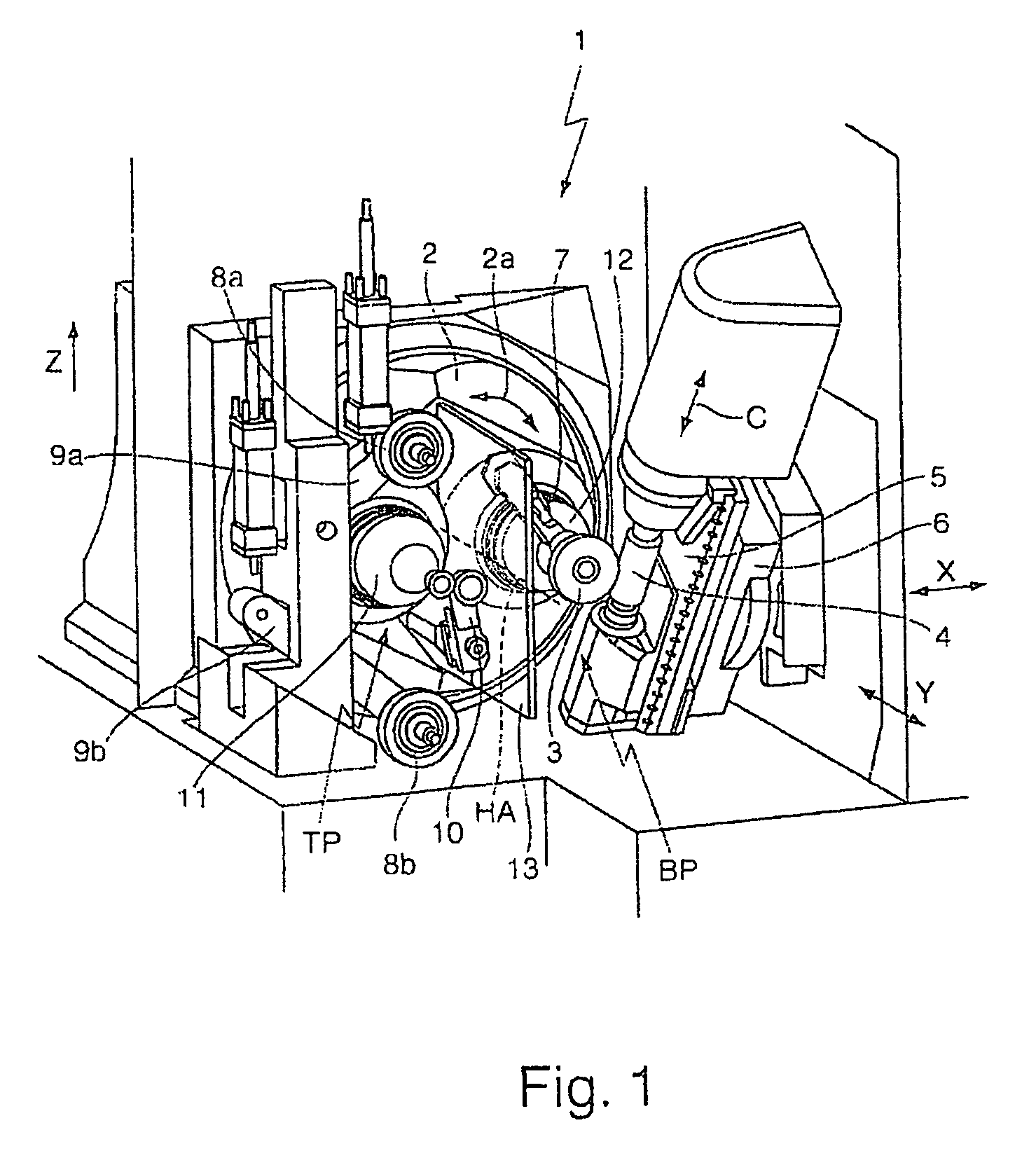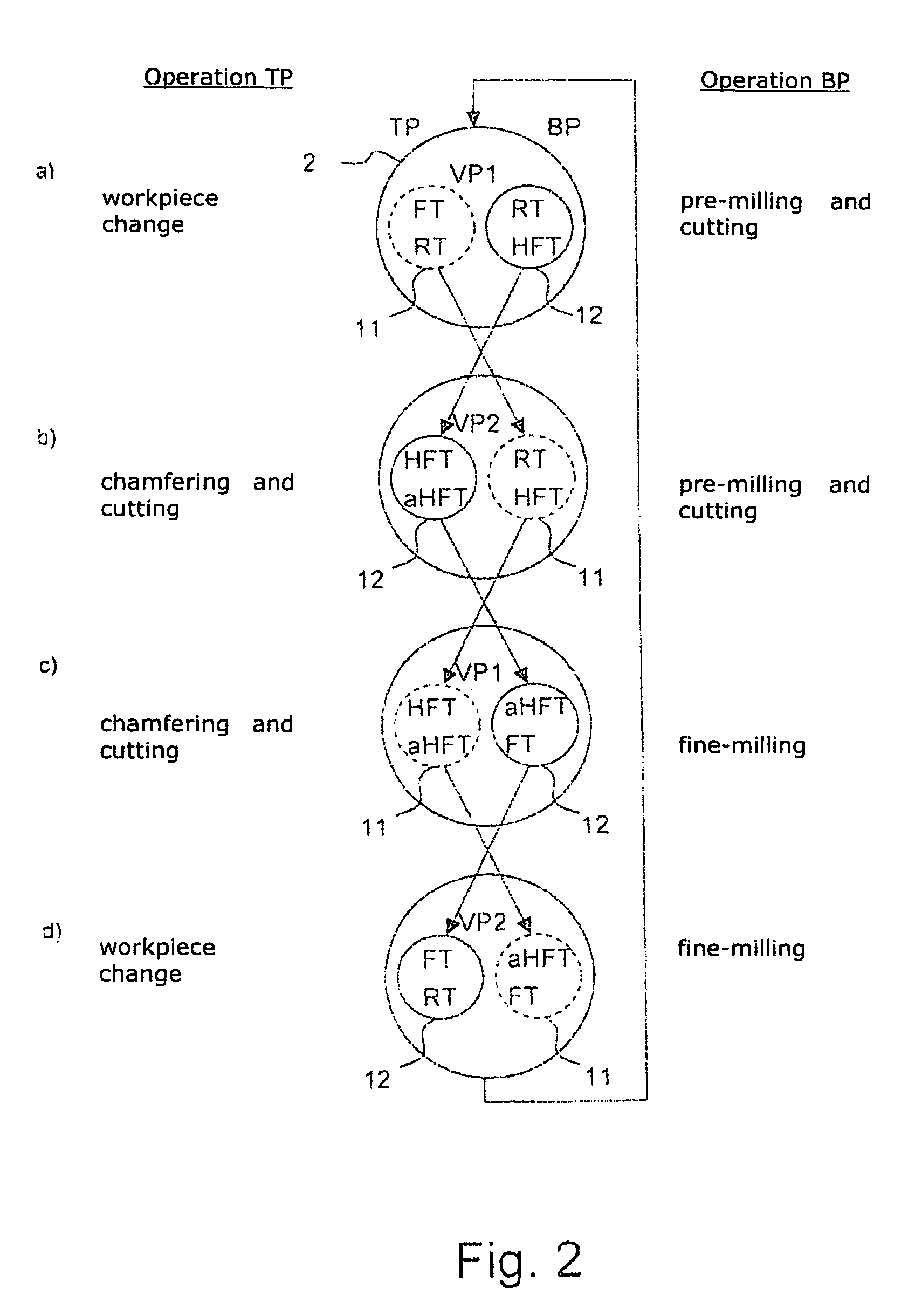Deburring by hobbing with integrated secondary deburring without a smoothing tool
a technology of secondary deburring and hobbing, which is applied in the direction of belt/chain/gearring, domestic applications, and teeth of gears, etc., can solve the problems of prolonging the machining time of the milling machine, consuming a lot of time and labor, and reducing the efficiency of the machine tool, so as to achieve the effect of simple machine tool structure, low cost and easy maintenan
- Summary
- Abstract
- Description
- Claims
- Application Information
AI Technical Summary
Benefits of technology
Problems solved by technology
Method used
Image
Examples
Embodiment Construction
[0037]FIG. 1 shows a machine tool 1 with which the operating method according to the invention may be used.
[0038]The machine tool 1 has a rotary holder 2 which is in the form of a drum and which is rotatable by a motor about a horizontally extending main axis HA in the direction of the arrow 2a. Disposed on the rotary holder 2 are a first workpiece spindle 11 and a second workpiece spindle 12. A respective workpiece may be clamped to each of the workpiece spindles 11, 12, for example by means of a chuck, and may be set in rotation by a motor. The axes of rotation of the workpiece spindles 11, 12 extend parallel to the main axis HA and are at the same distance from it. In the state shown, a workpiece 3 is fastened only to the second workpiece spindle 12. A transparent shield 13 is arranged between the workpiece spindles 11, 12 in order to prevent chips from flying between the workpiece spindles 11, 12.
[0039]The rotary holder 2 is situated in FIG. 1 in a first rotated position. In tha...
PUM
| Property | Measurement | Unit |
|---|---|---|
| time | aaaaa | aaaaa |
| time | aaaaa | aaaaa |
| distance | aaaaa | aaaaa |
Abstract
Description
Claims
Application Information
 Login to View More
Login to View More - R&D
- Intellectual Property
- Life Sciences
- Materials
- Tech Scout
- Unparalleled Data Quality
- Higher Quality Content
- 60% Fewer Hallucinations
Browse by: Latest US Patents, China's latest patents, Technical Efficacy Thesaurus, Application Domain, Technology Topic, Popular Technical Reports.
© 2025 PatSnap. All rights reserved.Legal|Privacy policy|Modern Slavery Act Transparency Statement|Sitemap|About US| Contact US: help@patsnap.com



